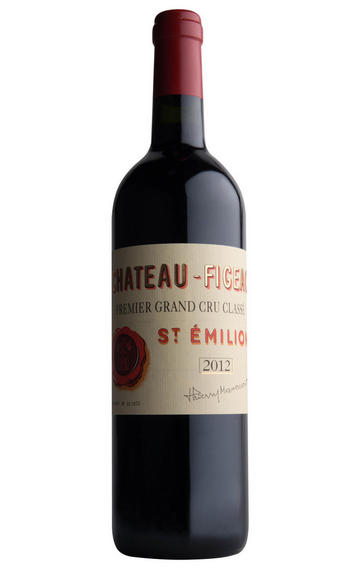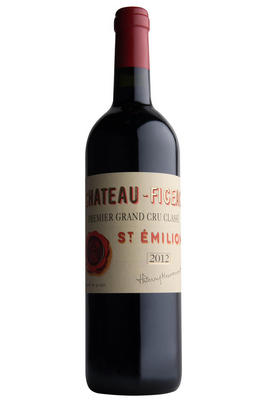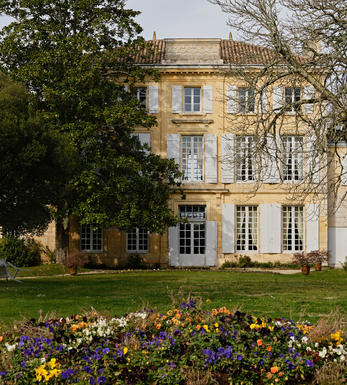
2012 Château Figeac, St Emilion, Bordeaux

Critics reviews
The 2012 Figeac is really beginning to come into its own and entering a sweet spot. This is the best I've had. Now more open on the nose, it has a wonderful bouquet with black fruit, cedar and blood orange, perhaps still with a patina of new oak to be fully assimilated. The palate is very pure and well-defined, linear and "strict" in a Médoc manner, whereas previous bottles have more of a peacock's tail. This just makes it more enticing.
Drink 2025 - 2048
Neal Martin, Vinous.com (December 2023)
The 2012 Figeac is super-expressive. Dense and fleshy in the glass - yet with gorgeous aromatic lift - the 2012 is impeccable in its overall balance. Dark red plum, cherry pit, cloves, leather, sage and liquorice are all laced into the inviting finish. Within the context of the year, the Figeac has a fair amount of structure, so it is best cellared for at least a few years. There is a lot to like here. Michel Rolland blended the 2012 and took over the consulting at Figeac in full beginning with the 2013 harvest.
Drink 2020 - 2037
Antonio Galloni, Vinous.com (January 2016)
40% each Merlot and Cabernet Sauvignon, with 20% Cabernet Franc.
Medium ruby-red. Spicy aromas of blueberry, violet, liquorice and black pepper. In the mouth, concentrated but tightly wound flavours of fresh blueberry and blackcurrant come across as slightly subdued. This elegantly styled wine is impressively juicy and bright for the year, finishing with a lingering savoury quality.
Ian D'Agata, Vinous.com (May 2013)
Ideal with a 2-hour carafe. 100% new oak for ageing, 40hl/h yield, harvest September 20 to October 13.
Far more open than the 2011, with generous blackberry puree and peony floral notes. A little less effortless finesse and balance than years like 2005 or 2010, but this has juice and character and is a highly successful Figeac. As it opens, you see that the tannins retain some austerity and resistance in them at this point. The first year where the blend begins to change and become more reactive to the individual vintage - and the first year where Frederic Faye took over as director. Michel Rolland arrived as a consultant in March 2013, so part of the blending team (and there was also an optical sorting machine for the first time).
Drink 2022 - 2040
Jane Anson, JaneAnson.com (March 2022)
This is a very strong effort from this great terroir. They finally seem to be making stricter selections and picking slightly riper fruit, thereby avoiding the vegetal underripe tones of the past as well as dilution from a lack of any selection. The 2012 Figeac (performing much better from bottle) has a dense ruby/purple colour and a beautiful nose of graphite, blackcurrants, and spice box, followed by a medium-bodied, elegant yet still concentrated and authoritative style of wine. This is a beauty, and the great terroir that has existed for centuries comes through beautifully. Give it 3-4 years of cellaring and drink it over the following 20 years.
Drink 2018 - 2038
Robert M. Parker, Jr., Wine Advocate (April 2015)
Tasted blind.
Purplish crimson. The deepest colour? Cool, calm and collected on the nose. Lots of vivacity and contained, coiled-spring energy. Dry finish. Not rich but refined. Luscious texture.
Drink 2022 - 2045
Jancis Robinson MW, JancisRobinson.com (June 2022)
A very direct, compact and muscular style, with a dark core of currant, steeped blueberry and plum notes, liberally coated with roasted vanilla and melted licorice accents. Rather rounded for the vintage and a step behind the 11, relying more on a caressing edge than vigorous drive.
James Molesworth, Wine Spectator (April 2013)
Deep, savoury nose with plenty of blackberry fruit, plus notes of bitter chocolate and roasted meat. At once ripe and generous, but also lively and pleasantly dry, thanks to the moderate amount of fine tannin, this has more elegance and complexity at the finish than many wines of the vintage.
Drink or hold
James Suckling, JamesSuckling.com (June 2022)
As ever with Figeac, this will benefit from longer ageing than most because of the proportion of Cabernet Sauvignon and Cabernet Franc in the blend. These give distinction, freshness and length to the flavour but also tannin, which needs time to soften. A wine that grows in the glass.
Drink 2025 - 2040
Sebastian Payne MW, Decanter.com (March 2022)
A step up over the 2014, the 2012 Château Figeac is a big, opulent, authoritative Figeac loaded with ripe black fruits (blackberries, currants), smoked earth, roasted herbs, and truffle aromas and flavours. Rich, powerful, concentrated, and tannic, it’s a blockbuster that has 2+ decades of prime drinking ahead of it. The 2012s can still be found in the market and are smart buys.
Drink 2018 - 2038
Jeb Dunnuck, JebDunnuck.com (November 2017)
About this WINE

Château Figeac
Château Figeac is one of the leading St. Emilion estates and its wine, with its high Cabernet content, has often been described as the most Médoc-like in St-Emilion. The estate is located in the north-west of the appellation with its vineyards adjoining those of Cheval Blanc. Its 54 hectares of vineyards lie on a deep, Médoc-like gravel topsoil over a flinty, iron-rich subsoil. Figeac was promoted in 2022 to the level of Premier Grand Cru Classé A, the top tier of the St Emilion classification.

St Émilion
St Émilion is one of Bordeaux's largest producing appellations, producing more wine than Listrac, Moulis, St Estèphe, Pauillac, St Julien and Margaux put together. St Emilion has been producing wine for longer than the Médoc but its lack of accessibility to Bordeaux's port and market-restricted exports to mainland Europe meant the region initially did not enjoy the commercial success that funded the great châteaux of the Left Bank.
St Émilion itself is the prettiest of Bordeaux's wine towns, perched on top of the steep limestone slopes upon which many of the region's finest vineyards are situated. However, more than half of the appellation's vineyards lie on the plain between the town and the Dordogne River on sandy, alluvial soils with a sprinkling of gravel.
Further diversity is added by a small, complex gravel bed to the north-east of the region on the border with Pomerol. Atypically for St Émilion, this allows Cabernet Franc and, to a lesser extent, Cabernet Sauvignon to prosper and defines the personality of the great wines such as Ch. Cheval Blanc.
In the early 1990s there was an explosion of experimentation and evolution, leading to the rise of the garagistes, producers of deeply-concentrated wines made in very small quantities and offered at high prices. The appellation is also surrounded by four satellite appellations, Montagne, Lussac, Puisseguin and St. Georges, which enjoy a family similarity but not the complexity of the best wines.
St Émilion was first officially classified in 1954, and is the most meritocratic classification system in Bordeaux, as it is regularly amended. The most recent revision of the classification was in 2012

Cabernet Sauvignon Blend
Cabernet Sauvignon lends itself particularly well in blends with Merlot. This is actually the archetypal Bordeaux blend, though in different proportions in the sub-regions and sometimes topped up with Cabernet Franc, Malbec, and Petit Verdot.
In the Médoc and Graves the percentage of Cabernet Sauvignon in the blend can range from 95% (Mouton-Rothschild) to as low as 40%. It is particularly suited to the dry, warm, free- draining, gravel-rich soils and is responsible for the redolent cassis characteristics as well as the depth of colour, tannic structure and pronounced acidity of Médoc wines. However 100% Cabernet Sauvignon wines can be slightly hollow-tasting in the middle palate and Merlot with its generous, fleshy fruit flavours acts as a perfect foil by filling in this cavity.
In St-Emilion and Pomerol, the blends are Merlot dominated as Cabernet Sauvignon can struggle to ripen there - when it is included, it adds structure and body to the wine. Sassicaia is the most famous Bordeaux blend in Italy and has spawned many imitations, whereby the blend is now firmly established in the New World and particularly in California and Australia.


Buying options
Add to wishlist
Description
The 2012 Figeac is really beginning to come into its own and entering a sweet spot. This is the best I've had. Now more open on the nose, it has a wonderful bouquet with black fruit, cedar and blood orange, perhaps still with a patina of new oak to be fully assimilated. The palate is very pure and well-defined, linear and "strict" in a Médoc manner, whereas previous bottles have more of a peacock's tail. This just makes it more enticing.
Drink 2025 - 2048
Neal Martin, Vinous.com (December 2023)
wine at a glance
Delivery and quality guarantee